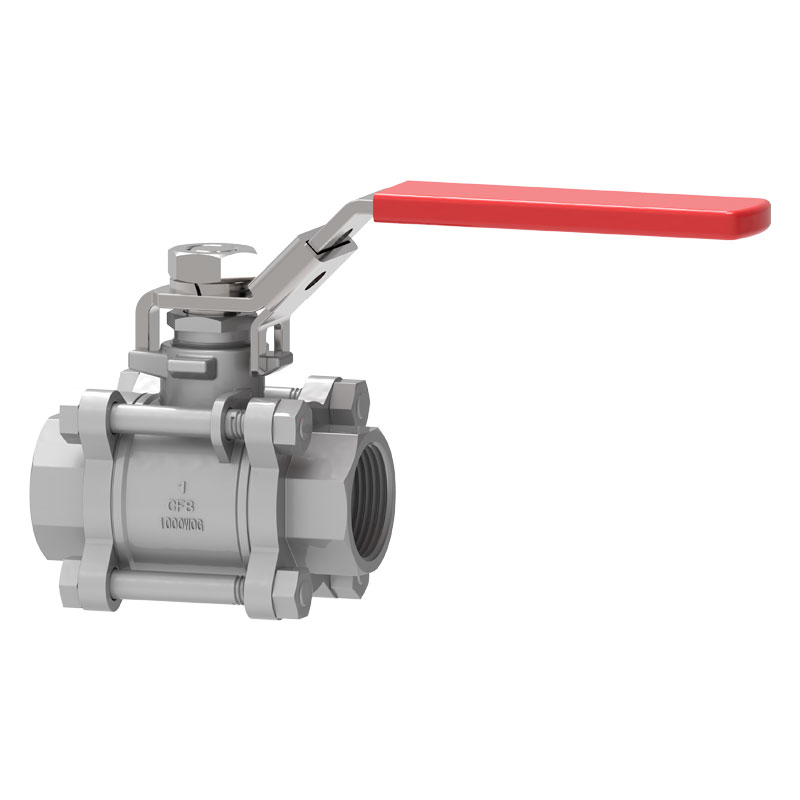Why Is a Ball Valve Essential for Efficient Fluid Control?
2024-12-31
When it comes to fluid control systems, whether in industrial applications, plumbing, or even in household appliances, the ball valve stands out as one of the most reliable and efficient components. But why exactly is a ball valve essential for fluid control, and what makes it such a popular choice?
In this blog, we’ll explore the purpose of a ball valve, how it works, and why it’s the go-to solution for a wide range of applications.
What Is a Ball Valve?
A ball valve is a type of valve that controls the flow of fluid through a pipe or system by using a spherical ball with a hole (bore) through the middle. The ball is mounted inside the valve body and can be rotated with a handle or actuator to control fluid flow. When the hole in the ball aligns with the flow path, the fluid can pass through. When the valve is closed, the ball rotates so that the hole is no longer in line with the flow path, stopping the fluid.
Ball valves are typically used for on/off control, but certain types are designed for throttling applications as well. They are commonly made from materials such as stainless steel, brass, and plastic, which offer durability and corrosion resistance.
Why Is a Ball Valve So Important?
1. Reliable On/Off Control
One of the main reasons ball valves are widely used is for their ability to provide quick and reliable on/off control of fluid flow. The design of the valve ensures that the ball is either fully open or fully closed, preventing any leakage and ensuring tight shut-off. This makes ball valves ideal for situations where rapid fluid isolation is required, such as during maintenance or emergency shutdowns.
In applications like water supply systems or industrial processes, where the need to stop or start the flow of liquid is frequent, the reliability of a ball valve cannot be overstated. The simplicity of the ball valve design, with a straightforward 90-degree turn, ensures that operators can control the flow with minimal effort.
2. Low Friction and Ease of Operation
Ball valves are known for their low operating torque, meaning they require less force to turn the valve handle or actuator. This makes them incredibly easy to operate, even in larger systems where high pressures are involved. Unlike gate valves or globe valves, which may require more force to open or close, ball valves can be turned quickly and easily with minimal effort, reducing wear on the valve and improving long-term performance.
This low friction operation is especially important in systems that require frequent opening and closing of the valve, such as in heating, ventilation, and air conditioning (HVAC) systems, or in food and beverage manufacturing.
3. Tight Sealing for Leak Prevention
Ball valves are known for their tight sealing capabilities, making them excellent at preventing leaks. The ball is seated in a way that ensures a secure seal when the valve is closed, even under high-pressure conditions. This makes ball valves ideal for applications where leakage could be dangerous or costly, such as in gas pipelines, chemical processing, or water treatment plants.
Additionally, the materials used in the construction of the ball and valve seats (such as PTFE, a durable and chemically resistant plastic) provide added security against leaks, even in corrosive or high-temperature environments.
4. Durability and Longevity
Ball valves are highly durable and can withstand extreme conditions such as high pressures, temperatures, and harsh environments. They are resistant to corrosion, rust, and abrasion, especially when made from stainless steel or other high-quality materials. This durability means that ball valves have a long lifespan, making them a cost-effective choice for many industries.
In industrial and chemical applications, where the valves are exposed to aggressive chemicals or extreme temperature fluctuations, the durability of the ball valve ensures that they will continue to operate effectively without requiring frequent replacements or repairs.
5. Versatility Across Applications
Ball valves are used across a broad range of industries, from oil and gas, water treatment, and pharmaceuticals to residential plumbing. Their versatility is a major factor in their widespread use. Here are just a few examples of how they are used:
- Industrial Applications: Ball valves are used in chemical plants, power plants, and manufacturing facilities to control the flow of gases, liquids, and steam.
- Plumbing and HVAC Systems: In homes and commercial buildings, ball valves are used for regulating water flow and for shutting off water in the event of a leak or repair.
- Oil and Gas: Ball valves are frequently used in the oil and gas industry for controlling the flow of oil, gas, and other fluids through pipelines.
- Food and Beverage: Food-grade ball valves are used to control the flow of ingredients and liquids in food processing plants, as they can be easily cleaned and sanitized.
6. Compact Design and Space Efficiency
Compared to other types of valves, such as gate or globe valves, ball valves have a more compact design, which makes them ideal for systems where space is limited. Their small footprint makes them easy to integrate into both large and small systems without taking up too much room.
The compact design also contributes to their efficiency. Since ball valves open and close with a simple quarter-turn motion, there’s no need for complicated gears or mechanisms, saving space and reducing the potential for failure.
How to Maintain Your Ball Valve
While ball valves are durable and low-maintenance, they do require some basic care to ensure optimal performance:
- Regular Inspection: Periodically check the valve for signs of corrosion, wear, or damage to ensure it remains functional and leak-free.
- Lubrication: Apply lubrication to the valve stem and other moving parts to prevent friction and ensure smooth operation, especially in high-pressure applications.
- Cleaning: Keep the valve clean and free from debris to avoid blockages that could affect the flow of fluid.
- Seal Checks: Inspect the seals for any signs of degradation or wear and replace them if necessary to prevent leaks.
Conclusion
The ball valve is a critical component for efficient fluid control, offering reliable performance, easy operation, and long-lasting durability. Whether you’re working with industrial systems, plumbing, or home appliances, the role of the ball valve cannot be overstated. It provides tight shut-off, reduces the risk of leaks, and is versatile enough to meet the needs of virtually any application.
From controlling the flow of liquids and gases to ensuring that critical systems function properly, a ball valve is an indispensable part of modern fluid management systems. By understanding its importance and maintaining it properly, you can ensure that your system remains safe, efficient, and reliable for years to come.



